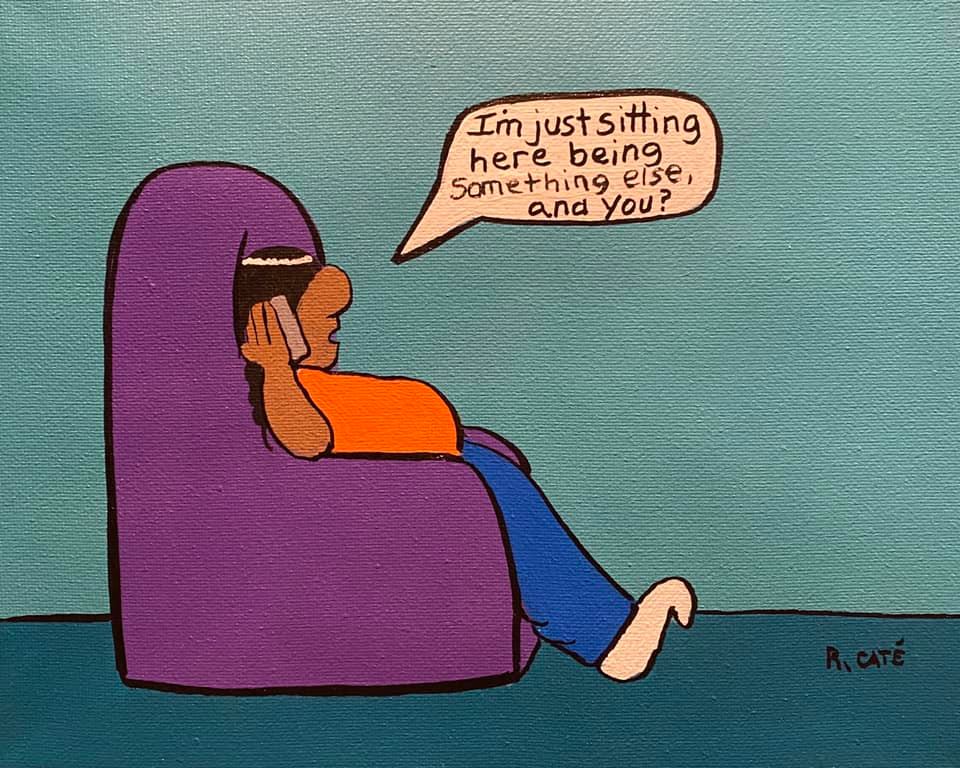Most Media Didn’t Make the Connection
‘A New Brown Belt Voting Bloc Is Developing’
How Much Do Black Lives Matter in Foreign News?
Newsroom Diversity Seen as Worldwide Priority
Short Takes
Support Journal-isms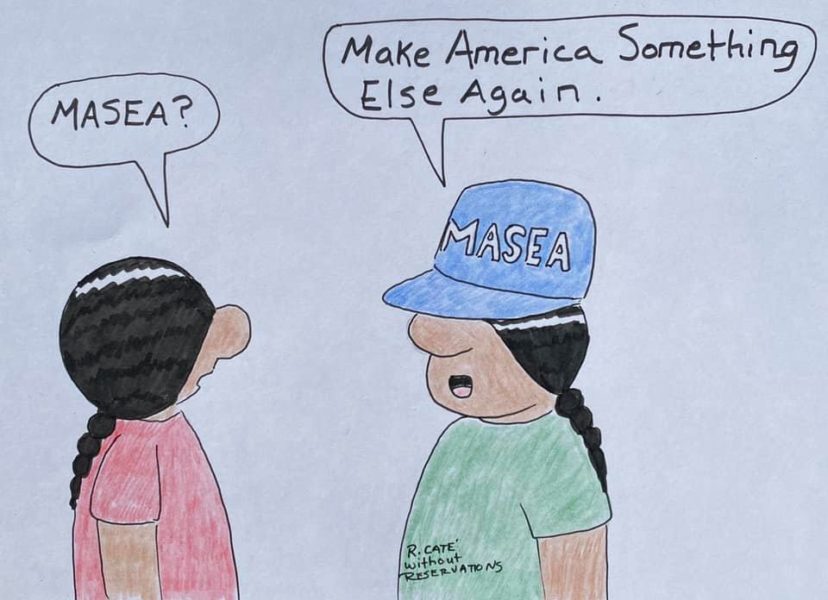
Most Media Didn’t Make the Connection
On election night four years ago, it was a lot easier to find on television what many of color were thinking.
“For a lot of people in America, this feels like their get-back,” rapper T.I. told host Marc Lamont Hill on BET at 11:42 p.m. on Election Day 2016, at least two hours before it was obvious that Donald Trump’s victory was certain. “This lets us know exactly where we stand. Don’t keep thinking that because this is 2016, we’re in a better place than we are.”
Van Jones said on CNN, “This is a deeply painful moment tonight. I know it’s not just about race. There’s more going on than that. But race is here, too, and we’ve got to talk about that.”
This year, BET relied largely on CBS’ election night programming, TV One was showing “Sanford and Son,” and Jones wasn’t in evidence at CNN’s first election night panels.
Granted that in 2020, with mountains of ballots still uncounted on election night, there was plenty for commentators to talk about.
But the fact that Trump won even more votes than in 2016 was more likely to be mentioned on social media and on niche websites than in the broadcast coverage.
“Don’t know abt you but [this is the] only place I’m seeing discussions abt the persistent scourge of whiteness ie white supremacy on this nation b/c it sure as heck is not on TV,” tweeted African American author Ronda Racha Penrice. “#TheTruth”
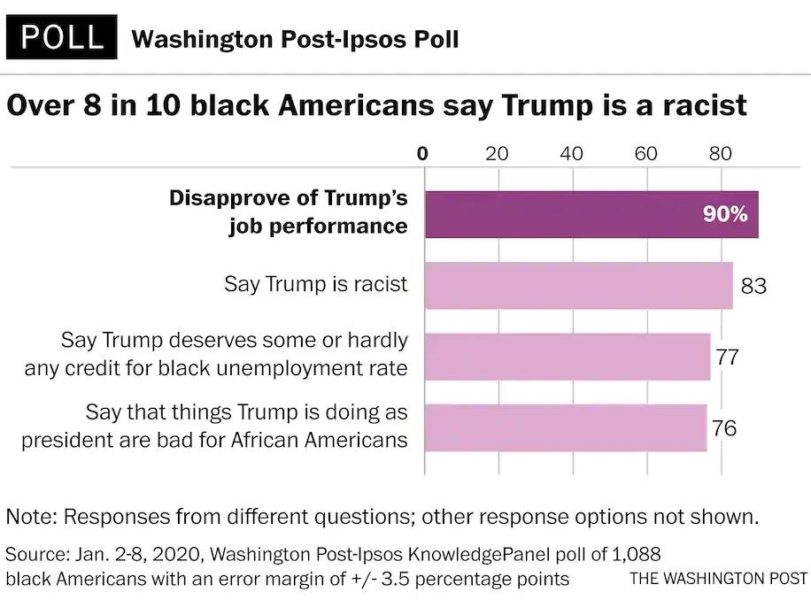
On The Root, Terrell Jermaine Starr made the point bluntly though crudely under the headline “The Presidential Race Isn’t Finished, but One Thing Remains True…America Is Still Racist.”
In Detroit, Republican protesters shouted “Stop the Count” Wednesday as election workers were counting absentee ballots, prompting Detroit native Michael Eric Dyson, the author and professor, to voice the sentiment about racism more matter-of-factly.
“I grew up in Detroit in the 60s. This is a stark reminder of the deep hatred of blackness felt by many white folk who lived in the suburbs but who exploited the city’s services and resources before fleeing back to ‘safety.‘ ‘Stop the count’ may as well be ‘Stop the blacks.’ Sad,” Dyson tweeted.
The large vote for Trump was especially significant, some noted, because Trumpism will continue with or without 45 in the White House.
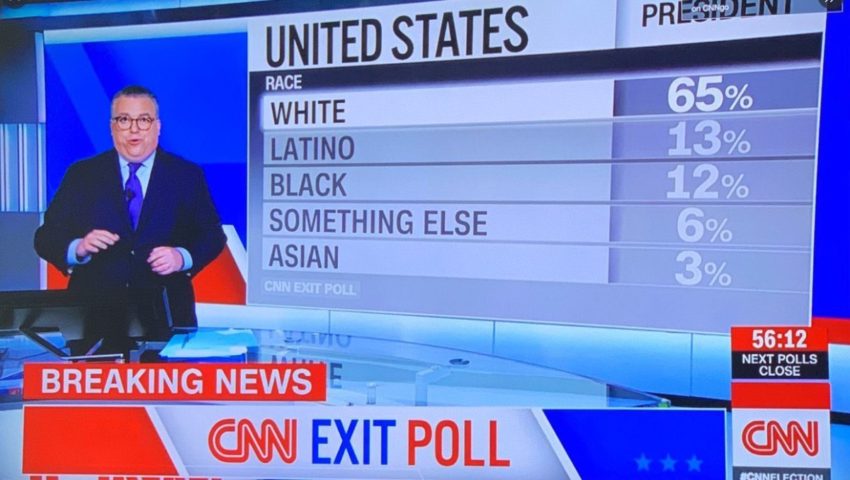
Brandon Tensley wrote for CNN what the anchors weren’t saying. “For one thing, despite four years of President Donald Trump — that is, of a man who has made White nationalism a central part of his administration and whose abject negligence in the face of a pandemic has contributed to more than 230,000 dead — millions of voters are turning out for him.”
Not to mention, as Peter Baker and Maggie Haberman wrote of Trump Wednesday in the New York Times, “if he is forced to vacate the White House on Jan. 20, Mr. Trump is likely to prove more resilient than expected and almost surely will remain a powerful and disruptive force in American life.
“He received at least 68 million votes, or five million more than he did in 2016, and commanded about 48 percent of the popular vote, meaning he retained the support of nearly half of the public despite four years of scandal, setbacks, impeachment and the brutal coronavirus outbreak that has killed more than 233,000 Americans.”
When the election night voting maps turned Florida and Texas red, some thoughts went to issues of voter suppression, which likewise received short shrift in the ongoing television commentary.
Subini, who describes herself online as a “Critical Educator-Black Asian Feminist,” tweeted, “Any time someone mentions the results from Florida, All I can think about is the formerly incarcerated people who got their rights restored but then had the poll tax applied and still can’t vote.”
Michael Bloomberg, LeBron James and other celebrities launched a multimillion-dollar effort to pay off lingering court fines and fees for Florida felons. About 32% of the 4,700 felons who had their rights restored in the states four biggest counties had registered to vote, according to the Miami Herald, Tampa Bay Times and ProPublica. (video)
Nearly two years ago, Florida voters approved a landmark constitutional amendment allowing felons to vote, but a 2019 law subsequently required felons to pay off fees, fines or restitution before voting,
“The one certainty is that Florida’s Republican governor and Legislature have tamped down the felon vote, according to an analysis of state records by the Tampa Bay Times, Miami Herald and ProPublica,” Lawrence Mower and Langston Taylor wrote last month for the Herald. They added, “Like the poll taxes of the Jim Crow era, the restrictions have especially hit Black Floridians, who comprise a disproportionate share of felons and register overwhelmingly as Democrats.”
Meanwhile in Texas, “Republican leaders and activists have furiously worked the levers of power, churning out lawsuits, unsubstantiated specters of voter fraud and official state orders in their bid to limit voters’ options during the pandemic,” Jolie McCullough reported Monday, updated Tuesday, for the Texas Tribune.
The voter intimidation issue drew the second highest number of calls to its hotline, Tatiana Anderson of the Lawyers Committee for Civil Rights told listeners Wednesday on Washington’s WPFW-FM. Anderson is spokesperson for the national, nonpartisan Election Protection coalition.
Latinos and Native Americans had their particular concerns with the coverage.
The good news was that six Native Americans were elected to the House of Representatives on Tuesday – a record-breaking number.
The Native American Journalists Association elicited an apology from CNN Thursday after CNN’s election night coverage featured an on-air graphic with the phrase “something else” to refer to voters who were not white, Latino, Black or Asian American. “This type of language continues the efforts to erase Indigenous and other voters who don’t neatly fall into the race categories listed in the graphic,” NAJA said.
Asked for comment, a CNN spokesperson replied to Journal-isms, “Our exit poll results included a poor choice of words and in no way did we intend to minimize the importance of indigenous communities and the Native American vote. We have corrected it for any of our coverage moving forward.”
Juan Gonzalez, co-host of “Democracy Now!,” analyzed the vote on the air Thursday. He said “a false narrative” is taking root that Latinx voters were primarily to blame for the weak Democratic result.
“The main story is that people of color, especially Latinos, flocked to the polls in numbers that far exceeded what the experts had expected, while the total number of votes cast by white Americans barely increased from the last presidential election. How come none of the experts are asking why white voters underperformed [for] the Democratic Party?” (more in next item.)
It’s laughable that in 2020, this country still needs to be reminded, Sesame Street style, that Latinos are not a monolith & the Latino vote is a mirage. This misconception comes from how little u bother knowing us, how superficially u cover us & how absent we are in newsrooms.
— Esmeralda Bermudez (@BermudezWrites) November 4, 2020
Jose A. Del Real and Arelis R. Hernández explained Wednesday in the Washington Post, “The key to making sense of those trend lines, political experts and community organizers say, is to throw out the idea that Latinos compromise one single electorate.
“Although in the aggregate they tend to lean Democratic, the political calculations of Latinos are shaped by where they live, their ancestry, age, education, income and faith, among other factors in a group of approximately 32 million citizens, all with distinct political inclinations.”
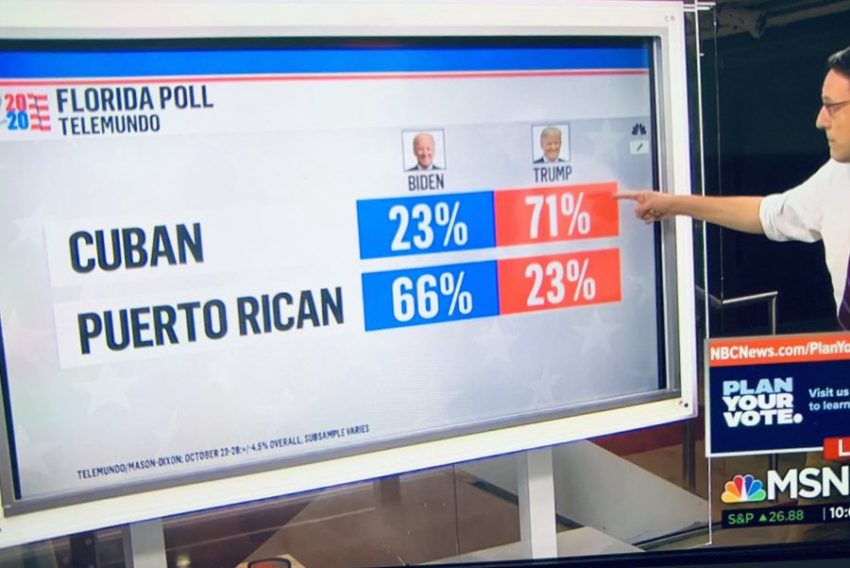
Courtland Cox, the chairman of the SNCC Legacy Project who assisted this year with the NAACP’s project to increase voter participation in battleground states, messaged Journal-isms Thursday, “No detailed analysis is being undertaken during this tense period; however, I would note that if the Black community voted for [Joe] Biden in the same percentages as the white community we would be having a different discussion today. The clear view and concentrated vote of the Black community in the battleground states are making a tremendous difference.”
But the Black turnout wasn’t always acknowledged.
Amy B Wang, Vanessa Williams and Reis Thebault wrote Wednesday for the Washington Post, “In public remarks Wednesday, Biden asserted that when all the votes are counted, he will have won Wisconsin and Michigan by more than Trump won them in 2016, and that he was on track to earn more votes overall than any candidate in history. Absent, however, was any mention of the Black votes that would have comprised a significant portion of that support. Trump has vowed to legally challenge votes in several battleground states, signaling a long, drawn-out battle ahead.”
On social media, some Black journalists linked faults in the coverage to diversity in newsrooms.
“When you realize that Donald Trump is the very embodiment of the U.S., not some outlier, you will lower your expectations and not be surprised by what’s unfolding,” Washington Post reporter Darryl Fears wrote on Facebook.
“Deception, bigotry, hypocrisy, denial of voting rights, whiteness, the pursuit of capital at any cost are the core foundations of this country. Attempts to rise above this nation’s base instincts are only aspirational.
“I’m black, 60, and exhausted. Journalism is a noble profession that means well but it’s also one of the reasons we are where we are.”
The Post’s Eugene Scott tweeted, “These days, I am reminded quite often that you do not have to be white to support white supremacy.”
Alicia Montgomery, executive producer, podcasts at Slate magazine, tweeted, “If newsrooms were meritocracies, there wouldn’t be such a need for diversity programs. Too many White media leaders who blew the story in 2016 survived to do it again in 2020. The Black, brown and yes, some young white journalists, who got it right would have had those jobs.”
Asked by Journal-isms to elaborate on his comment about journalism, Fears cited history. “For this racial reckoning we’re in, journalism shifted, and every move it made on behalf of African Americans and Latinos revealed what hasn’t [been] done for more than a half century.
“The issues being protested now date back to the 1870s. Every new beat focusing on social justice, every data reporter hired to dig into statistics showing police mistreatment of black citizens, every deep dive into redlining and its impact on wealth and crime are jobs and stories that were relevant and necessary decades ago. Suddenly leadership roles were created and lower tier journalists of color elevated to them.
“Given the speed at which this all happened, any observer should ask why the quality of these new jobs and the quality of the people hired to fill them wasn’t recognized before. As you know, African American journalists have complained about workplace discrimination for decades.”
Juan Gonzalez analyzes the vote. (Credit: “Democracy Now!”)
‘A New Brown Belt Voting Bloc Is Developing’
From an analysis of the returns Thursday by “Democracy Now!” co-host Juan González:
“So, the bulk of the increase of the vote in this election came from people of color, largely Latinos. So, now people say, ‘Well, but there was a slight percentage increase among African Americans and Latinos for Trump.’ Well, percentages don’t win elections. Votes win elections. Right? And that’s what you’ve got to understand. Would you rather have 70% of 12 million votes, or would you rather have 68% of 20 million votes?
“The increase has been so large, whereas the percentages have stayed roughly the same, that there has been — there was enormous increase in the vote by Asian Americans, Latino Americans and African Americans for Biden and the Democratic Party.
“Why was this? And I think the enthusiasm and the turnout of the Latinx community was fueled by four years of constant Republican scapegoating and attacks on Latinos, from the disastrous response to Hurricane Maria for the Puerto Rican community, to family separations, and also to the terrible response of the Trump administration to the coronavirus.
“And it is why Arizona and Nevada and Colorado are likely, it seems, to go for Joe Biden. And what has happened now is that there is a new Brown Belt voting bloc that is developing in the Southwest, that includes Arizona, Nevada, Colorado, New Mexico, and very soon Texas, as well.
“So, the real underperformers in this election were white voters, who not only did not have a qualitative increase in their vote totals — they dropped from 71% of the electorate to 65% of the electorate — but they voted in an even higher percentage for Trump this time than last time or than they did for John McCain in 2008. And this is especially true among white women.
“So, now, how is this possible, given the years now of sexual — of allegations of sexual assault against Trump, his denigrating of women, his family separation policies, that white women increased the percentage of the vote that they gave to Donald Trump? What’s up with that? Why are all the commentators not dissecting what the heck is going on in white America and with white women in America? Unfortunately, it seems to me, looking at the numbers, there is no gender gap. There’s a racial gender gap, in that African American and Latino women are voting so overwhelmingly for the Democratic Party, but not white women. And I think that needs to be analyzed more.”
- Lici Beveridge and Cam Bonelli, Hattiesburg (Miss.) American: Jim Crow-era water fountains will remain outside Mississippi courthouse after vote
- Charles M. Blow, New York Times: Exit Polls Point to the Power of White Patriarchy
- Cam Bonelli, Hattiesburg (Miss.) American: Morning after election, Hattiesburg raises new Mississippi state flag at City Hall
- Jamelle Bouie, New York Times: We Waited in Vain for a Repudiation That Never Came
- Louis Chan, AsAmNews: Poll: Outreach pays off with high AAPI voter participation in 2020
- Tim Elliott, Politico Magazine: America Is Eerily Retracing Rome’s Steps to a Fall. Will It Turn Around Before It’s Too Late?
- Joaqlin Estus, Indian Country Today: Natives carve out new role in politics
- Emil Guillermo, Asian American Legal Defense and Education Fund: Count every vote – the president can’t dictate the election
- Ian W. Karbal, Columbia Journalism Review: How careful local reporting undermined Trump’s claims of voter fraud
- Bethany Mandel, Forward: Of course Trump’s voters lie to pollsters. You call us all racists.
- NAACP Legal Defense and Educational Fund, Inc.: LDF Issues Statement on Voter Suppression, Misinformation, and Machine Malfunctions on Election Day
- Kyle Pope, Columbia Journalism Review: What the polls show, and the press missed, again
- Mauricio J. Quijano, Mississippi Free Press: ‘Media Is a Battlefield’: How Local Latinos See Coverage of Trump, Biden, Issues
- Mary Annette Pember, Indian Country Today: ‘Something else’ may make all the difference this election
- Kevin Rector, Anita Chabria, James Queally, Benjamin Oreskes, Los Angeles Times: California goes big on criminal justice reform, setting a new, uncertain path
- Kat Stafford, Associated Press: Election emerges as referendum on race relations in America (Oct. 30)
- Doris Truong, Poynter Institute: Election Day compounded an already trying year for journalists of color
- Isvett Verde, New York Times: Some Latinos Voted for Trump. Get Over It.
Deprose Muchena, Amnesty International’s regional director for East and Southern Africa, describes Ethiopian massacre. (Credit: YouTube)
How Much Do Black Lives Matter in Foreign News?
At least two gruesome events took place during Monday’s news cycle: In Vienna, four people were killed in a shooting rampage, and it was reported that the bodies of 54 men, women and children were found in western Ethiopia, mowed down in a school field.
Which one made the U.S. networks’ evening news?
We know the answer. For all the talk of Black lives mattering, when it comes to newsworthiness, in too many cases Black lives abroad don’t meet Western news standards.
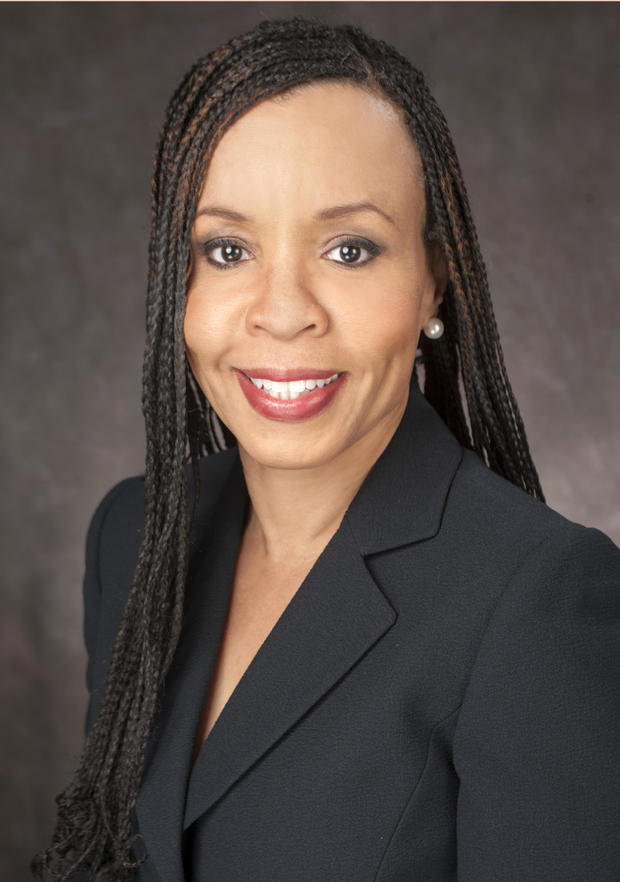 Why? A spokesperson for CBS News, where Kim Godwin (pictured) is about to receive the Ida B. Wells Award from the National Association of Black Journalists, did not respond. Neither did Godwin, who is the network’s executive vice president of news.
Why? A spokesperson for CBS News, where Kim Godwin (pictured) is about to receive the Ida B. Wells Award from the National Association of Black Journalists, did not respond. Neither did Godwin, who is the network’s executive vice president of news.
Andrew Tyndall, who tracks network news coverage for his Tyndall Report, told Journal-isms, “I am sorry to tell you that the nightly newscasts have all but thrown in the towel on international reporting in general. Africa was always low on their agenda. It is now virtually invisible. This link shows the sum total of all International reporting for the whole of September & October. You’ll see just one African story. And that was because Beyonce was interested in it. Tough times indeed.”
The co-chairs of NABJ’s Global Task Force had a different take.
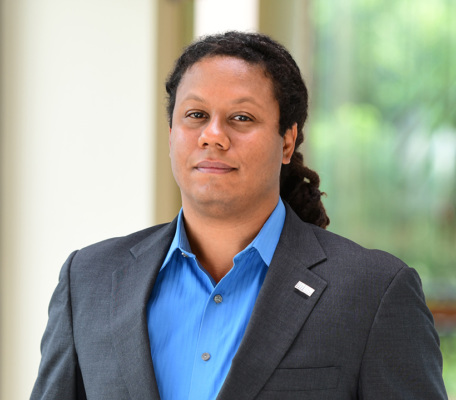 “iI’s quite clear: American News organizations have been cutting back on their foreign coverage for decades now and have never dedicated the kinds of resources to covering the continent of Africa as they need to,” messaged Damaso Reyes (pictured), a free-lancer based in Barcelona, Spain.
“iI’s quite clear: American News organizations have been cutting back on their foreign coverage for decades now and have never dedicated the kinds of resources to covering the continent of Africa as they need to,” messaged Damaso Reyes (pictured), a free-lancer based in Barcelona, Spain.
“Americans, and American journalists and news organizations are no exception, have struggled with the concept of Black Lives Matter. The relative lack of coverage of this atrocity so far compared to what happened in Vienna is another indication that American journalism has a long way to go before it can truly claim to fairly and accurately cover the world.”
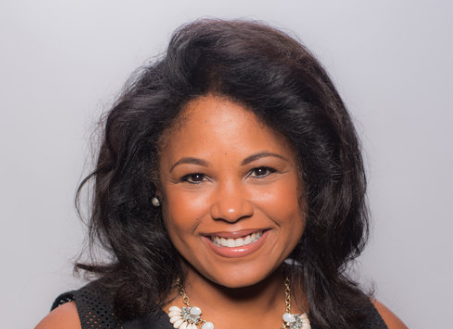 Stacey Samuel (pictured), Reyes’ co-chair, added, “I have to agree with Damaso’s assessment, given my experience at 3 of the largest nets in the US (CNN, CBS, NPR). Naturally, Al Jazeera did cover it.
Stacey Samuel (pictured), Reyes’ co-chair, added, “I have to agree with Damaso’s assessment, given my experience at 3 of the largest nets in the US (CNN, CBS, NPR). Naturally, Al Jazeera did cover it.
“But, the largest global story right now is the US presidential election — it’s the sexiest headline, and made-for-tv, unfortunately. And US elections are when networks make their money in ad sales. The premise of a terrorist attack in a largely white European city is still more attractive to US mainstream newsrooms. Period. The editorial deciders still look at all the countries on the continent (as they do with US ‘inner cities’) as given to violence. I share all of this from my opinion and professional observations.
“I would suggest we hold a panel for newsroom editorial leaders demystifying persistent myths.”
Al Jazeera wasn’t alone in providing coverage. So did the Associated Press, the BBC, the Guardian and the New York Times.
In the Washington Post, the Vienna attack received a separate bylined story Tuesday on Page A17 in the print edition.
Another attack in Kabul, which “left at least 23 dead and 22 wounded” also had a bylined story on Page A17.
The Ethiopia story, written by the AP’s Elias Meseret, was placed in the unbylined “Digest” of briefs.
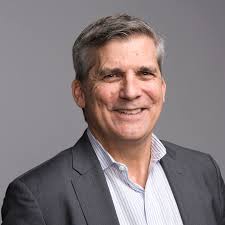 If a reader suspected the coverage might be tied to the diversity of the foreign news staff, he or she might be onto something. Post spokeswoman Kris Coratti said the Post does not provide staff demographic information at the desk level. Foreign Editor Douglas Jehl (pictured) did not respond, but an internal staff directory shows no Black journalists on the Post’s foreign desk.
If a reader suspected the coverage might be tied to the diversity of the foreign news staff, he or she might be onto something. Post spokeswoman Kris Coratti said the Post does not provide staff demographic information at the desk level. Foreign Editor Douglas Jehl (pictured) did not respond, but an internal staff directory shows no Black journalists on the Post’s foreign desk.
The view was different at The New York Times. “The story you mention was written by Abdi Latif Dahir, who is Kenyan, based in Nairobi for us and covers East Africa,” Greg Winter (pictured below), international managing editor, messaged Journal-isms Wednesday.
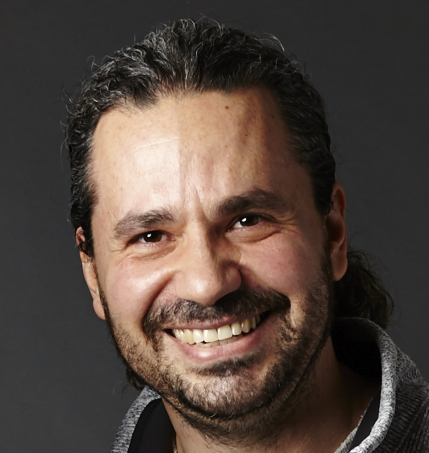 “He wrote the story about Uganda today as well. Another one of our correspondents who has written about Ethiopia is Selam Gebrekidan, particularly after the Ethiopian Airlines crash. She is Ethiopian and based in London (her regular beat is global investigations). Declan Walsh is the other reporter who writes about Ethiopia regularly. He is an Irish citizen and covers East Africa for us.
“He wrote the story about Uganda today as well. Another one of our correspondents who has written about Ethiopia is Selam Gebrekidan, particularly after the Ethiopian Airlines crash. She is Ethiopian and based in London (her regular beat is global investigations). Declan Walsh is the other reporter who writes about Ethiopia regularly. He is an Irish citizen and covers East Africa for us.
“Other than that, we have several African American editors on the International desk, including myself, Kelly Virella, Lauretta Charlton (who used to run Race Related for The Times) and Yonette Joseph,, to name a few.”
As for the significance of the Ethiopian massacre, Winter said, “The Times has always taken the very active stance that life takes precedence above all other editorial concerns, and it did so many years — decades, actually — before the Black Lives Matter Movement emerged in the United States.
“The belief that life matters above all else, whether in Africa or anywhere else, has been a prime factor in determining stories from around the world and has certainly always guided our coverage decisions in the two decades I’ve been at The Times. So that has not changed.
“But having a diverse reporting and editing staff is especially critical in deepening our understanding of events in communities and helping reduce the possibility that newsrooms, in executing that commitment, do not unwittingly stumble into tropes, misrepresentations or faulty depictions of people of color and the issues confronting them, whether here in the United States or elsewhere around the globe.”
Newsroom Diversity Seen as Worldwide Priority
“More than four out of ten newsroom employees believe ethnic diversity is the highest diversity priority in the next year, according to a new study by the Reuters Institute for the Study of Journalism published” on Oct. 29, Hanaa’ Tameez reported Oct. 30 for Nieman Lab.
“On the heels of the Black Lives Matter movement during a global pandemic ahead of an election in the United States, the Reuters Institute surveyed 136 news industry leaders from 38 countries between September 21 and October 7, 2020. The goal was to better understand how the external challenges of doing journalism in 2020 has impacted news organizations internally.
“The survey respondents were mostly from the United Kingdom, the United States, India, France, Denmark, Germany, and Spain but responses also came from Australia, Brazil, Colombia, Finland, Indonesia, Kenya, Lithuania, Malaysia, Nigeria, Poland, and Thailand. Respondents hold senior positions in the editorial, business, and product departments of their news organizations.
“One respondent emphasized that improving diversity in newsrooms isn’t about numbers, but about how diversity leads to well-rounded coverage.
“ ‘It is about allowing staff from diverse backgrounds to tell stories that are important to that group through the lens of that background and for people from that background in a way that resonates with them vs a homogeneous approach,’ the CEO of a digital publication in Asia said.”
Short Takes
-
“Al Roker announced on TODAY that he has been diagnosed with prostate cancer and will be undergoing surgery to have his prostate removed,” Jen Long and Scott Stump of NBC’s “Today” show wrote Friday. “The 66-year-old TODAY weatherman and co-host explained he wanted to publicly reveal his diagnosis to spotlight the fact that 1 in 7 African American men, 1 in 9 men overall, will be diagnosed with prostate cancer in their lifetime.”
- “ESPN is slashing 500 jobs as cost pressures from the COVID-19 pandemic are accelerating the sports media company’s move into streaming,” Stephen Battaglio reported Thursday for the Los Angeles Times. “The cuts, which include 300 layoffs, were revealed Thursday in a memo from Jimmy Pitaro, president of the Walt Disney Co.-owned unit. In addition to the layoffs, another 200 open positions will be eliminated, the company said. ESPN has more than 5,000 employees worldwide. . . .The memo did not specify when the layoffs would take effect, but said employees ‘will be learning about their future’ over the next few weeks.”
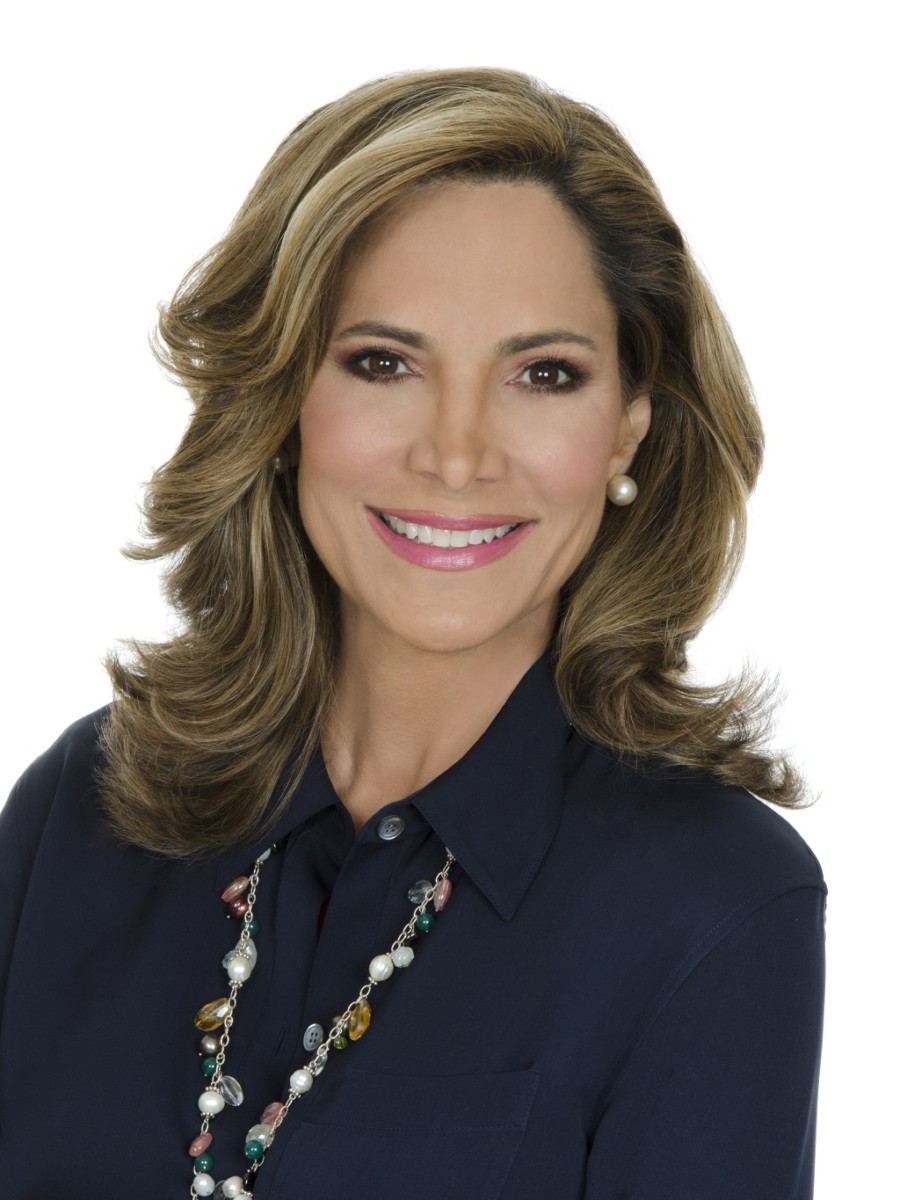 María Elvira Salazar (pictured), a Cuban American former journalist and Republican candidate, has won Florida’s 27th Congressional District race, Veronica Villafañe reported Thursday for her Media Moves site. “The second time is a charm for Salazar, who lost to Democratic Rep. Donna Shalala when she first ran for office in 2018. Salazar formerly worked as a host for WGEN-TV, a MundoFox Broadcasting affiliate in Key West Fla., and “Noticiero Telemundo-CNN,” the first program produced by CNN en Español a year after its creation in 1997.
María Elvira Salazar (pictured), a Cuban American former journalist and Republican candidate, has won Florida’s 27th Congressional District race, Veronica Villafañe reported Thursday for her Media Moves site. “The second time is a charm for Salazar, who lost to Democratic Rep. Donna Shalala when she first ran for office in 2018. Salazar formerly worked as a host for WGEN-TV, a MundoFox Broadcasting affiliate in Key West Fla., and “Noticiero Telemundo-CNN,” the first program produced by CNN en Español a year after its creation in 1997.
- Linda Villarosa, a contributing writer for The New York Times Magazine, where she covers race, inequality and health, is an inductee into the LGBTQ Journalists Hall of Fame, the National Lesbian & Gay Journalists Association announced Oct. 21. “For several years, she edited the health pages for The New York Times, working on health coverage for Science Times and for the newspaper at large. She was also the executive editor of Essence Magazine. She is the author or co-author of three books and teaches reporting, writing and Black Studies at The City College of New York in Harlem. She has trained journalists from around the world to better cover the HIV/AIDS epidemic at the International AIDS conferences in Barcelona, Bangkok, Toronto, Mexico City, Vienna, Melbourne and Durban.”
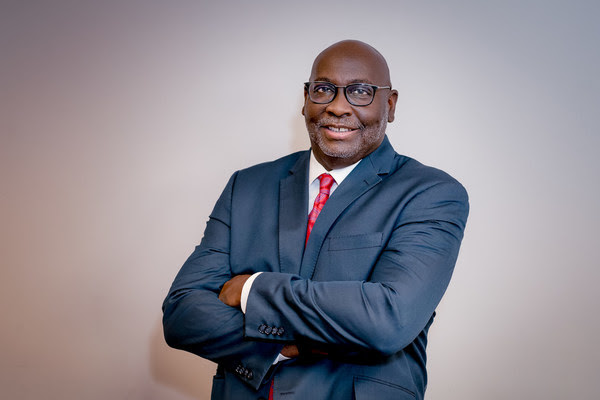 Ken Frierson (pictured,) general sales manager at WNEM-TV in Bay City, Mich., serving the Saginaw-Flint market, has been promoted to vice president and general manager, the Meredith Corp. announced Monday.
Ken Frierson (pictured,) general sales manager at WNEM-TV in Bay City, Mich., serving the Saginaw-Flint market, has been promoted to vice president and general manager, the Meredith Corp. announced Monday.
- In public media, “Our own ‘reckoning’ requires we undertake ‘creative risk’ necessitating a recalibration of public media core values and best practices,” Maxie C. Jackson III wrote Oct. 30 for greaterpublic.org. “Like the articles within the Constitution of the United States, the policies within our Act are beautifully drafted and offer an ideal. However, both were conceived in simpler times when the needs, wants and aspirations of white Men prevailed as being best for all. . . .”
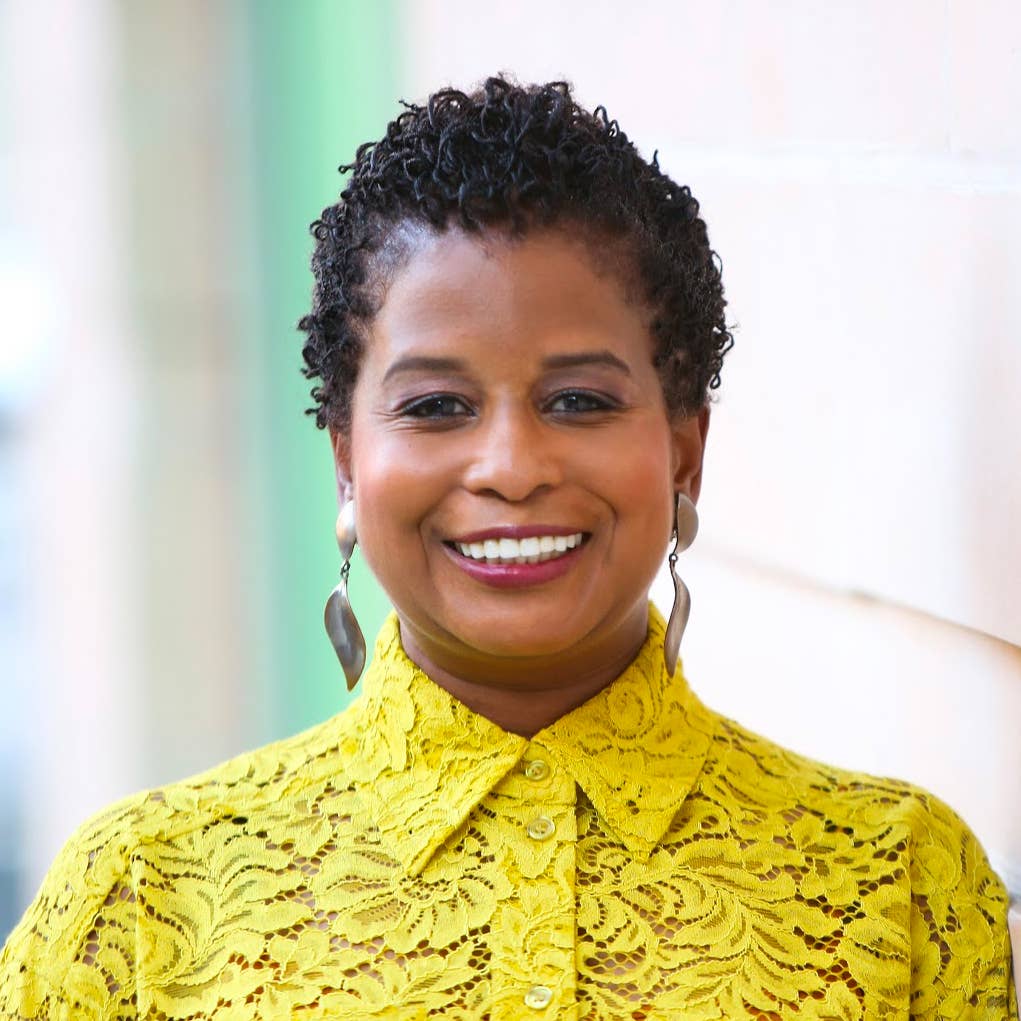 One “of our most talented, experienced and creative reporters, Nikita Stewart (pictured), is being promoted to assistant editor on Metro, a management position, where she will play an important role in driving our coverage of the city,” Cliff Levy, New York Times associate managing editor and Metro editor, announced to the staff Oct. 28. “Nikita has long been a dominant force in our department, first in the City Hall bureau and most recently on the social services beat, where she has done exemplary work highlighting the growing problem of income inequality in the city, including escalating homelessness.”
One “of our most talented, experienced and creative reporters, Nikita Stewart (pictured), is being promoted to assistant editor on Metro, a management position, where she will play an important role in driving our coverage of the city,” Cliff Levy, New York Times associate managing editor and Metro editor, announced to the staff Oct. 28. “Nikita has long been a dominant force in our department, first in the City Hall bureau and most recently on the social services beat, where she has done exemplary work highlighting the growing problem of income inequality in the city, including escalating homelessness.”
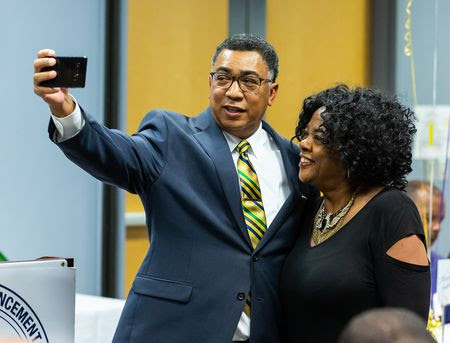
Ron Martin, WGAL anchor, and Vera Cornish take a selfie during the Greater Harrisburg Area NAACP’s 64th Annual Freedom Fund Dinner in 2018. (Credit: Vicki Vellios Briner/PennLive) “In an emotional video, WGAL 8 anchor Ron Martin explained why he is retiring from his position on the station’s news team,” after nearly 50 years in broadcasting, and 37 years here at WGAL, Sean Adams reported Oct. 30 for PennLive, based in Harrisburg, Pa. Martin is retiring on Nov. 25. His family has been “right there with me the whole time,” he said. “But now it’s time for me to give back some of that time I took from them.”
- “Two weeks after publishing a long, juicy and instantly viral story about the world of competitive niche sports, and the wealthy parents who push their children to play them, the Atlantic on late Friday appended a nearly 800-word editor’s note informing readers that it was ‘deceived’ by the story’s author, Ruth Shalit Barrett,” Jeremy Barr reported Oct 31, updated Nov. 1, for The Washington Post. Barr also wrote, “In 1995, while working for the New Republic, Barrett received heavy criticism for a piece she wrote about racial diversity at The Post, which was found to contain many factual errors and was derided as ‘big lie propaganda’ and ‘racial McCarthyism’ by then-Executive Editor Leonard Downie Jr.“
- “A university president this month issued a scathing ‘directive’ at a student editor that forbade him from requesting public records, accused him of ‘attacking’ university officials and staffers in the course of his reporting, and stated that the editor had ‘discredited (himself) and this university,‘ ” Barbara Allen reported Oct. 28 for the Poynter Institute. “President Ronald Graham issued an Oct. 16 memo — written on the president’s university letterhead — to Jared Nally, editor-in-chief of the Indian Leader, the student newspaper at Haskell Indian Nations University in Lawrence, Kansas.” Kansas City Star editorial

- When Andrew Gillum went public with details of his sex-and-drugs scandal with Tamron Hall in September, he said yes when Hall asked, “Andrew, if you decided to go back into politics, do you believe that you could re-enter and possibly even be an elected official again one day?” The Florida politician wasn’t on the ballot on Election Day, but he was on BET putting his background to use. Gillum and Angela Rye hosted “Black America Votes 2020,” which can be seen on You Tube.
- “POLITICO today announced the launch of a competitive program that will offer four enterprising journalists or other professionals a front-row seat covering the biggest storylines dominating Washington,” Melissa Cooke wrote Oct. 30 for Politico. “The POLITICO Fellows program seeks to empower journalists aspiring to jump-start a career in political and policy journalism.” Cooke also wrote, “In partnership with the National Association of Black Journalists, the 12-month program is intended to train professionals who might not have gotten the opportunity to cover the White House, Congress and policy areas such as health care, trade, technology and finance. Reporting opportunities will include in-depth exploration of how key issues impact underrepresented communities.”
- “Today, the University of Oregon’s School of Journalism and Communications (SOJC) published the data from its research of close to 1,800 agencies in 65 U.S. locations, representing more than 20,000 employees,” Doug Zanger reported Oct. 22 for adweek.com, “This research, which the SOJC claims is the ‘largest database quantifying the diversity of advertising agencies across the United States,’ was researched by eight students (seven from diverse backgrounds) and faculty members.”
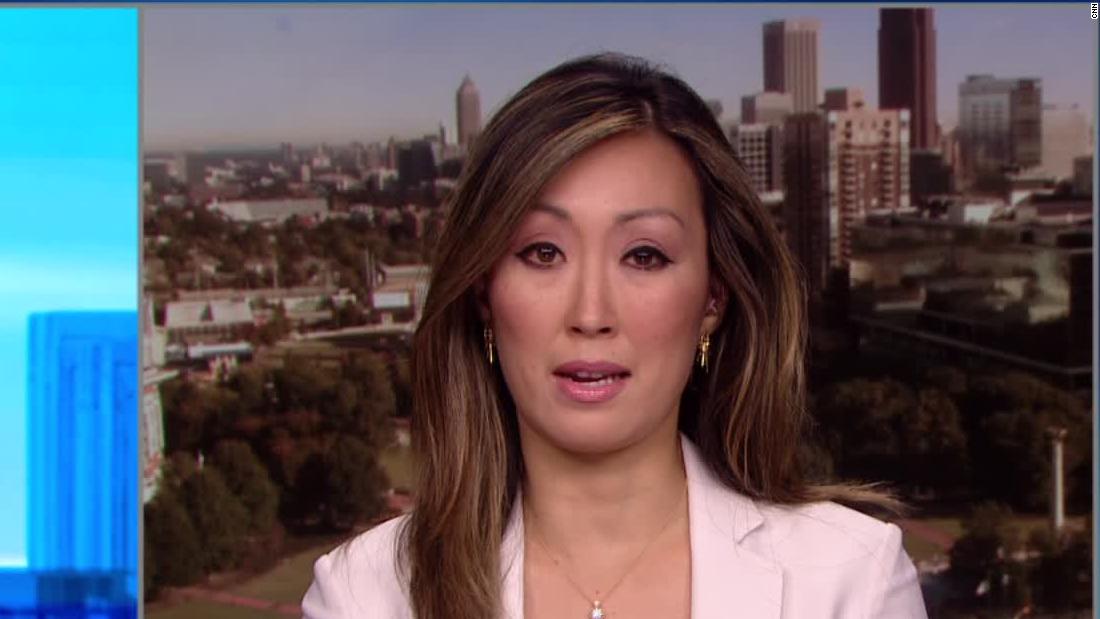 “CNN reporter Amara Walker (pictured) called out three people Friday including a police officer for three anti-Asian racist encounters,” Randall Yip reported Saturday for AsAmNews. “Walker says the incidents happened all within the same hour at New Orleans International Airport. ‘I’m shaking right now,’ Walker said during an interview on CNN discussing what happened.”
“CNN reporter Amara Walker (pictured) called out three people Friday including a police officer for three anti-Asian racist encounters,” Randall Yip reported Saturday for AsAmNews. “Walker says the incidents happened all within the same hour at New Orleans International Airport. ‘I’m shaking right now,’ Walker said during an interview on CNN discussing what happened.”
- “The Black Information Network is now on WWRL-AM 1600 in New York City,” Radio Ink reported Monday. “The launch, the day before the election, was marked by a special lighting of the Empire State Building at sundown. Journalist and BIN commentator Roland Martin will anchor live news coverage beginning at 7 PM, ET on election night 2020 and provide updates as the polls close and election tallies are reported nationwide.”
- “A new weekday offering from the Indigenous news website Indian Country Today is helping public TV stations increase their coverage of Native American communities,” Grace George reported Oct 29 for Current. “ICT Editor Mark Trahant joined the news service in 2018 after it took a two-year hiatus. His efforts since then to expand ICT’s audience and multimedia production led to the TV broadcast, also titled Indian Country Today.” Patty Talahongva is host and executive producer.
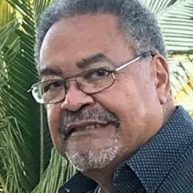 Hajj Wali Akbar Muhammad (pictured), a freelance photographer who had been photography editor of the Nation of Islam’s Muhammad Speaks, died of pancreatic cancer Oct. 10 in Kemah, Texas. He was 80. A District of Columbia native, Muhammad moved to Chicago in 1970, where he began working as a photographer for the paper. There, he forged a friendship with Muhammad Ali and traveled to Arabic nations in the Middle East and North Africa. Muhammad later relocated to Atlanta and Kemah. Survivors include a brother, retired journalist Ivan C. Brandon of Washington.
Hajj Wali Akbar Muhammad (pictured), a freelance photographer who had been photography editor of the Nation of Islam’s Muhammad Speaks, died of pancreatic cancer Oct. 10 in Kemah, Texas. He was 80. A District of Columbia native, Muhammad moved to Chicago in 1970, where he began working as a photographer for the paper. There, he forged a friendship with Muhammad Ali and traveled to Arabic nations in the Middle East and North Africa. Muhammad later relocated to Atlanta and Kemah. Survivors include a brother, retired journalist Ivan C. Brandon of Washington.
- “The Washington Post has tapped Lizette Alvarez as a contributing opinion columnist, based in Miami, where she will cover issues related to Florida, immigration, politics and more,” Mariam Ahmed reported Monday for Talking Biz News. She also wrote, “Previously, Alvarez has worked at The Miami Herald, the New York Daily News and The New York Times, where she spent 22 years covering New York, Europe, Congress, military veterans, Florida and Puerto Rico.”
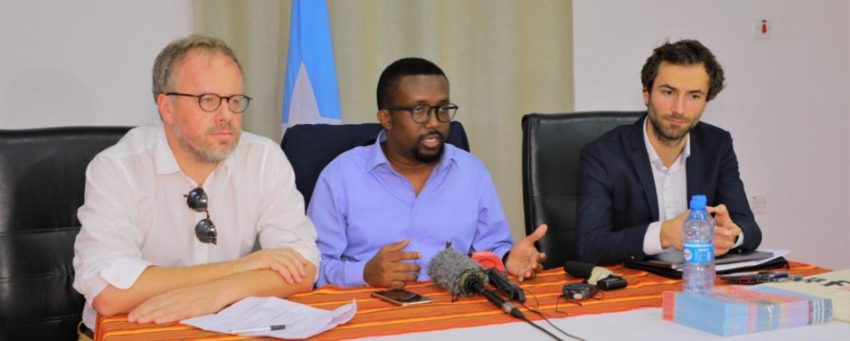
“In response to the first-ever visit to Somalia by Reporters Without Borders (RSF), the country’s president has pledged to pursue his government’s efforts to promote press freedom, while the prime minister has announced that a moratorium on arrests of journalists will soon be decreed and implemented,” the press freedom organization reported Oct. 27. It also said, “At least 25 journalists were detained in 2019 – often for several days or even weeks – after being arrested arbitrarily by the security services, and the 2020 total will be even higher.” Pictured is a joint press conference between Reporters Without Borders and the National Union of Somali Journalists in Mogadishu on Oct. 27. (Credit: Sayid Ali Taatiko) - “To mark the International Day to End Impunity for Crimes against Journalists, commemorated annually on Nov. 2, various organizations launched special reports that reveal Mexico as not only the deadliest country in Latin America for journalists, but a global leader in that undesirable category,” Teresa Mioli reported Monday for LatAm Journalism Review. “Along with Brazil, it is also one of the worst countries in the world for convictions of murderers of journalists. In Latin America and the Caribbean as a whole, 78 percent of the murders of journalists that occurred between 2006 and 2019 remain unsolved, according to a recent UNESCO report. Sixty-one cases have been resolved, while 207 are ongoing or not resolved.”
- “Brazilian authorities must promptly and thoroughly investigate the kidnapping of journalist Romano dos Anjos, bring those responsible to justice, and ensure he can work safely,” the Committee to Protect Journalists said Oct. 29.
- “Mexican authorities must immediately undertake an exhaustive and credible investigation into the killing of journalist Arturo Alba Medina, and determine if he was killed in retaliation for his work,” the Committee to Protect Journalists said Monday. “In the evening of October 29, unidentified assailants shot and killed Alba, host of the daily television news show ‘Telediario,’ in Ciudad Juárez, in the northern Mexican state of Chihuahua, according to news reports and a statement from the municipal public security secretariat, which CPJ reviewed. . . .”
- On Oct. 30, the International Press Institute, a global network of editors, media executives and leading journalists for press freedom, “demanded that Egypt reveal the whereabouts of photojournalist Mohamed al-Raai, who disappeared after interrogation by the National Security Agency.”
- The Committee to Protect Journalists said Oct. 30 that it welcomed Sierra Leone’s repeal of its criminal libel laws, and called for further reforms to ensure that journalists can work freely. Press freedom groups have urged repeal of such laws, saying their existence has the potential for misuse to punish journalism critical of those in power. In Lesotho, for example, three judges ruled in 2018 “that criminalizing defamation had a chilling effect of journalistic freedom of expression, resulting in self-censorship by journalists and a less-informed public,” CPJ reported then.
- “Zimbabwean police arrested journalist Hopewell Chin’ono at his home in Harare, the capital, earlier today and charged him with contempt of court for an October 28 tweet citing judges’ alleged criticism of Zimbabwean Chief Justice Luke Malaba, according to a Twitter post by Rose Hanzi, executive director of Zimbabwe Lawyers for Human Rights,” the Committee to Protect Journalists reported Tuesday.
To subscribe at no cost, please send an email to journal-isms-subscribe@yahoogroups.com and say who you are.
Facebook users: “Like” “Richard Prince’s Journal-isms” on Facebook.
Follow Richard Prince on Twitter @princeeditor
Richard Prince’s Journal-isms originates from Washington. It began in print before most of us knew what the internet was, and it would like to be referred to as a “column.” Any views expressed in the column are those of the person or organization quoted and not those of any other entity. Send tips, comments and concerns to Richard Prince at journal-isms-owner@yahoogroups.com
View previous columns (after Feb. 13, 2016).
- Diversity’s Greatest Hits, 2018 (Jan. 4, 2019)
- Book Notes: Is Taking a Knee Really All That? (Dec. 20, 2018)
- Book Notes: Challenging ’45’ and Proudly Telling the Story (Dec. 18, 2018)
- Book Notes: Get Down With the Legends! (Dec. 11, 2018)
- Journalist Richard Prince w/Joe Madison (Sirius XM, April 18, 2018) (podcast)
- Richard Prince (journalist) (Wikipedia entry)
- February 2018 Podcast: Richard “Dick” Prince on the need for newsroom diversity (Gabriel Greschler, Student Press Law Center, Feb. 26, 2018)
- Diversity’s Greatest Hits, 2017 — Where Will They Take Us in the Year Ahead?
- Book Notes: Best Sellers, Uncovered Treasures, Overlooked History (Dec. 19, 2017)
- An advocate for diversity in the media is still pressing for representation, (Courtland Milloy, Washington Post, Nov. 28, 2017)
- Morgan Global Journalism Review: Journal-isms Journeys On (Aug. 31, 2017)
- Diversity’s Greatest Hits, 2016
- Book Notes: 16 Writers Dish About ‘Chelle,’ the First Lady
- Book Notes: From Coretta to Barack, and in Search of the Godfather
- Journal-isms’ Richard Prince Wants Your Ideas (FishbowlDC, Feb. 26, 2016)
- “JOURNAL-ISMS” IS LATEST TO BEAR BRUNT OF INDUSTRY’S ECONOMIC WOES (Feb. 19, 2016)
- Richard Prince with Charlayne Hunter-Gault,“PBS NewsHour,” “What stagnant diversity means for America’s newsrooms” (Dec. 15, 2015)
- Book Notes: Journalists Follow Their Passions
- Book Notes: Journalists Who Rocked Their World
- Book Notes: Hands Up! Read This!
- Book Notes: New Cosby Bio Looks Like a Best-Seller
- Journo-diversity advocate turns attention to Ezra Klein project (Erik Wemple, Washington Post, March 5, 2014)
.



